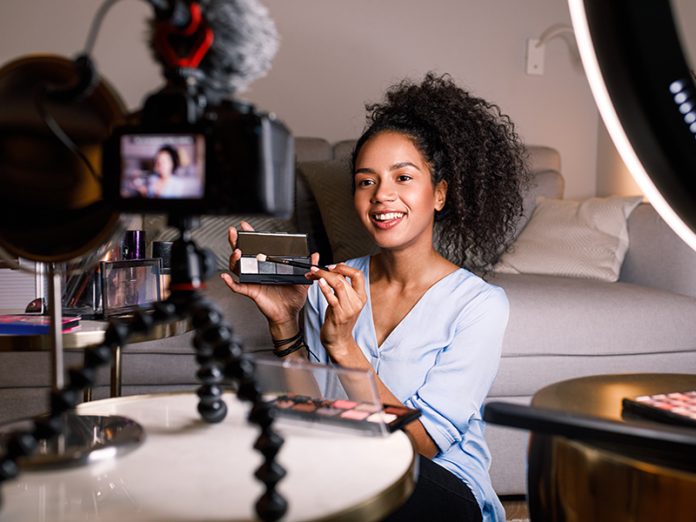As a result of consumers spending more time online, and on social media platforms, influencer engagement is at an all-time high. Platforms such as Facebook and Instagram are enjoying more than 50% more messaging on the platforms, and more than 70% more time spent on the apps, while influencers have reported as much as a 76% increase in likes on sponsored Instagram posts.
Influencer marketing cannot be ignored, now and into the future. However, partnering with the right influencer is critical, because one who is aligned to the values of a brand, will ultimately help drive sales.
Is an influencer a celebrity?
Influencer marketing has evolved to not only include traditional celebrities, but everyday inspirational and aspirational people. Some of the greatest influencers are industry experts and opinion leaders in their specific niche, such as makeup artists, fashionistas and health and fitness professionals.
While similar to the traditional celebrity endorsement model, influencer marketing can have even greater impact due to the trust an influencer has gained with his or her followers. Recommendations by influencers, especially when they are in-keeping with the pages’ typical content are usually more authentic, and received.
Why now?
When considering measurable ROI, influencer engagement scores much higher than most brand content. Brand videos on Facebook, for example, have an average watch time of 4.57 seconds, while influencers get tens of minutes.
According to Kantar’s Covid-19 Barometer Study in SA, 80% of consumers agree that brands shouldn’t exploit its consumers. The call is for all brand messaging to be more authentic, reassuring and practical rather than merely punting products.
Partnerships with the right-fit influencers could really support in delivering against these asks, but only if the chosen influencers are fans of the brand i.e. using the product, or aligned to the CSI strategy, etc.
Tips to consider when choosing an influencer:
1. Know your audience and message objectives
Understanding your message and your audience is crucial in deciding which influencer to partner with. It is also important to ensure everyone involved is on the same page and has a clear understanding of the objective of the campaign.
2. Someone who is a brand fit
Be cognisant of partnering with someone whose ethos is reflective of the values of your brand. Ensure their public (and wherever possible the private) image aligns with yours, and take a deep dive into not only what they are sharing now but also what they have shared in the past.
3. Authenticity is key
It’s important to ensure you work with influencers who convey authenticity when speaking about your brand or similar brands/products. An audience can easily pick up on a forced influencer and will be quick to call out brands on social media.
4. Engaging numbers and statistics
Big follower numbers don’t always mean big engagement, and often nano or micro-influencers may have higher engagement rates than that of macro influencers. There are tools on the market that allow you to deep dive into an influencer’s following, reach and audience demographics.
5. On the right tier
What is their value? Each influencer comes with their own audience size, average engagement rate and naturally their own rate-card, which all need to be taken into consideration when determining ROI.
Influencer tiers:
- Nano-influencers:
A relatively new breed of influencer, this person usually has less than 1 000 followers, but still has influence in their communities.
- Micro-influencers:
Usually regarded as industry experts or topic specialists, these influencers typically don’t boast celebrity status but have strong relationships with their followers (typically between 1 000 and 100 000).
- Macro-influencers
With between 100 000 and one million followers, they have impactful reach and a powerful engagement rate, with an engaged audience with shared interests. They have most often built their following online.
- Mega-influencers
These are usually A-list celebrities on social networks and in real life. A common view is that mega-influencers have more than one Million followers on at least one social platform.
From the mouth of an influencer
When discussing the role of influencers in the future, recognised influencer, Stacey Holland reckons that they will become even more important, but stresses the importance of remaining authentic no matter what.
“As macro influencers become bonafide celebrities, they tend to lose some of their credibility, and we no longer believe they actually use that skin cream or want us to buy that device because it truly works,” she says.
Nano- and micro-influencers are increasingly being seen as the drivers of authentic messaging, where the audience can relate to them as friends. This means that if managed properly, brands can get more bang for their buck.
“Brands should realise that influencers are content creators who can tailor a campaign to reach and influence a target audience,” adds TV presenter, influencer, motivational speaker and health enthusiast Mishka Loesch.

Perhaps the time is right to consider what influencer marketing can do for your brand and your objectives.





